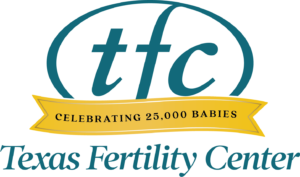
How IVF works at our San Antonio IVF center
IVF, or in vitro fertilization, is a fantastic fertility treatment. The intent of IVF was originally to treat couples with either severe factor male infertility or blocked or damaged fallopian tubes. It still does a great job of treating both of these. IVF also works wonders in couples who have not gotten pregnant with other fertility treatment methods. Are you wondering how IVF works so well?
One month means one egg = one chance for pregnancy
In a typical month, a woman ovulates one egg. Every day, most women have at least a dozen eggs available to grow, but only one does so successfully, and then ovulates. Unfortunately, the other eggs are lost. The basic goal of fertility treatment is to get more of those eggs to ovulate each month, and then make sure that sperm are present for fertilization.
In Clomid cycles, two or three eggs usually ovulate. When gonadotropin shots are used, three or four eggs are usually ovulated. Increasing the number of eggs ovulated generally increases the pregnancy rate per menstrual cycle (but also the multiples rate, read more below).
Then, insemination is often used to get better-quality sperm closer to the egg. But, the other steps still need to happen: sperm and egg must meet, fertilization must take place, the embryo must make it back to the uterus, and the right genetics and machinery need to work for implantation. That’s still a lot of steps left unaided. The key to how IVF works is maximizing the number of eggs available, as well as the chances of fertilization.
How IVF works: We often get double-digit numbers of eggs
In an average IVF cycle, many more eggs can be recruited (often more than 10 to 12 eggs) due to higher doses of gonadotropin shots. This is almost like getting the same number of eggs a woman would ovulate over a whole year’s time in just one month! But, we are not stealing from future months, just rescuing eggs that would have been lost that month in a natural cycle.
Furthermore, fertilization rates are high with IVF because egg and sperm are optimally introduced to each other: either placed right next to each other, outside the body, or delivered via ICSI (intracytoplasmic sperm injection) to ensure optimal fertilization rates.
The magic that happens in our IVF lab is another important part of how IVF works. The resulting embryos grow for several days in the lab, and the best of the best is transferred to the uterus, while the others can be saved for future use. This means a high chance of a healthy singleton pregnancy, and a low risk of multiples.
IVF addresses many steps of conception
During an IVF cycle, we are making sure many of the steps of getting pregnant actually happen: ovulation, fertilization and placement in the uterus. We are also transferring the best of the embryos into the uterus. These benefits give IVF pregnancy rates that are at least double the success rates of any other fertility treatment, with the added bonus that cumulative rates of embryo transfers mean long-term success over time.
If you’re wondering if you might be a good candidate for IVF or want to learn how IVF works, contact us for a consultation. Our skilled reproductive endocrinologists have extensive experience with IVF and can determine the best fertility treatment to put you on the fast track to pregnancy.


